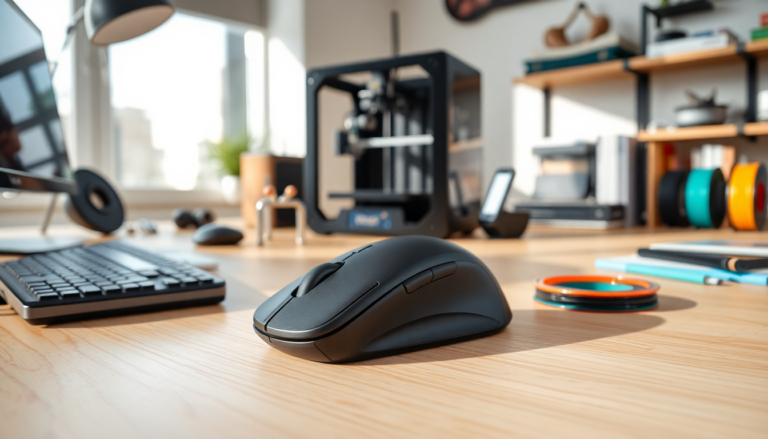Argomenti trattati
For left-handed users, finding ergonomic peripherals can often feel like an uphill battle. Have you ever tried using a mouse designed exclusively for right-handers? The Logitech MX Master 3S, a favorite among many gamers and professionals, falls into this category. But here’s the good news: thanks to the creativity and ingenuity of the maker community, a solution has emerged in the form of a 3D-printed left-handed version of this popular mouse. In this article, we’ll explore the details of this innovative project, offering insights into the design process and practical considerations for those looking to replicate it.
The Challenge of Ergonomics in Gaming Mice
When it comes to modern gaming mice, the general trend has been to design symmetrical shapes that accommodate both left and right-handed users. Yet, as evidenced by the Logitech MX Master 3S, many leading manufacturers still favor ergonomics tailored for right-handed individuals. With its unique design aimed at enhancing comfort and usability for right-handers, the MX Master 3S strategically places buttons for easy thumb access. This can be a real challenge for left-handed users who may struggle to use such products effectively.
Recognizing this gap, Matthias Deblaiser took the initiative to reverse-engineer the MX Master 3S, crafting a left-handed version that retains the ergonomic benefits of the original. This wasn’t just a simple task; it involved altering the external shell while also considering the internal hardware and its orientation. The complexity of this project highlights the commitment required to ensure that the left-handed model functions optimally, providing a superior user experience.
Open Source and Community Sharing
One of the standout features of Deblaiser’s project is his decision to make the design open source. This means anyone interested can download and print their very own left-handed MX Master 3S. How cool is that? This collaborative approach fosters a sense of community and encourages innovation within the 3D printing space. For those eager to dive into this project, accessing the design files through platforms like Printables is a breeze. However, it’s important to note that simply printing the outer shell won’t cut it; users must also reposition the internal components to ensure everything works as it should.
Another consideration is the type of material used for printing. While PLA is often favored for its ease of use, it may not hold up as well under the rigors of daily use compared to stronger materials like ABS or PETG. Choosing a durable filament is crucial for ensuring that the printed mouse lasts. Plus, employing post-printing techniques can enhance the surface finish, making the final product not only functional but also visually appealing, akin to commercially manufactured devices.
Practical Considerations for DIY Enthusiasts
If you’re new to the world of 3D printing, this project presents an exciting opportunity to jump into the DIY hardware scene. Understanding the necessary equipment and techniques is key, from selecting the right printer to mastering the printing process. Beginners may find it helpful to explore resources that outline the best 3D printers available and what features to consider when making a purchase.
While this left-handed version of the MX Master 3S offers a practical solution for left-handed gamers, it’s worth noting that users will still need to acquire an original Logitech MX Master 3S mouse to make this modification work. So, Logitech continues to maintain its position in the market, even as innovative solutions rise from the community.
As the demand for inclusive ergonomic designs grows, projects like this underscore the importance of community-driven innovation in the tech landscape. With the right tools and knowledge, left-handed users can finally enjoy the benefits of the Logitech MX Master 3S, tailored specifically to their needs. Isn’t it time we make technology more accessible for everyone?

